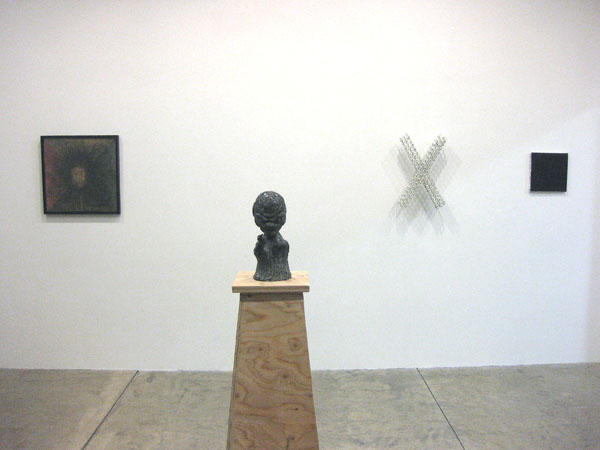



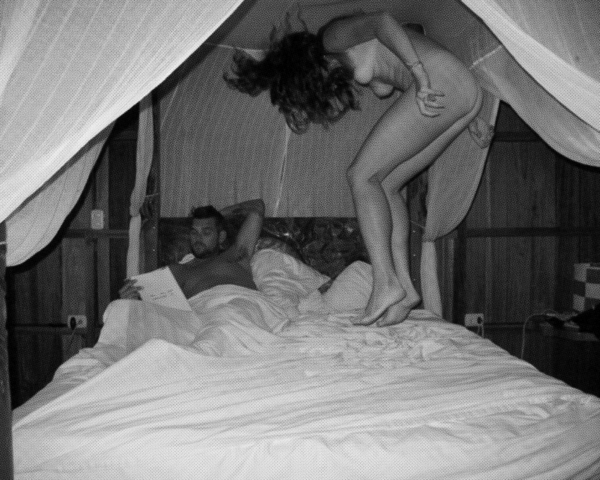

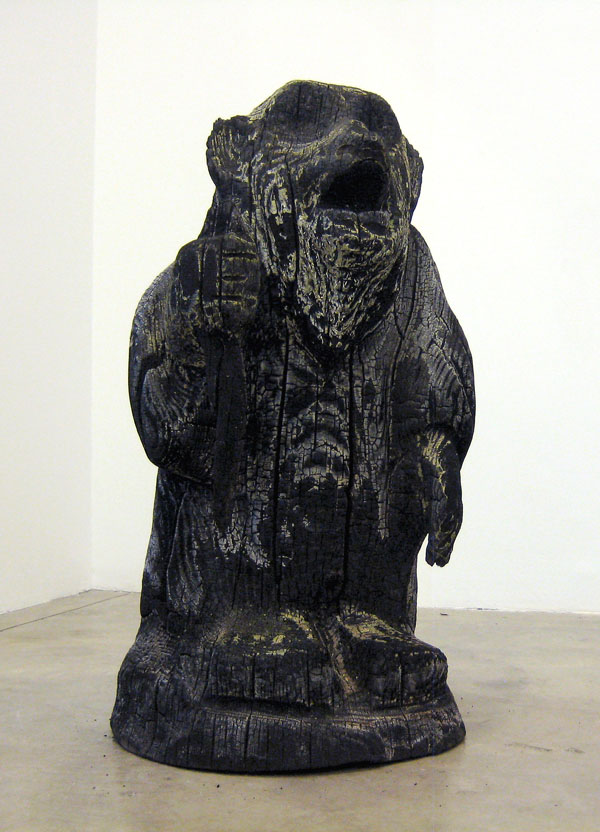
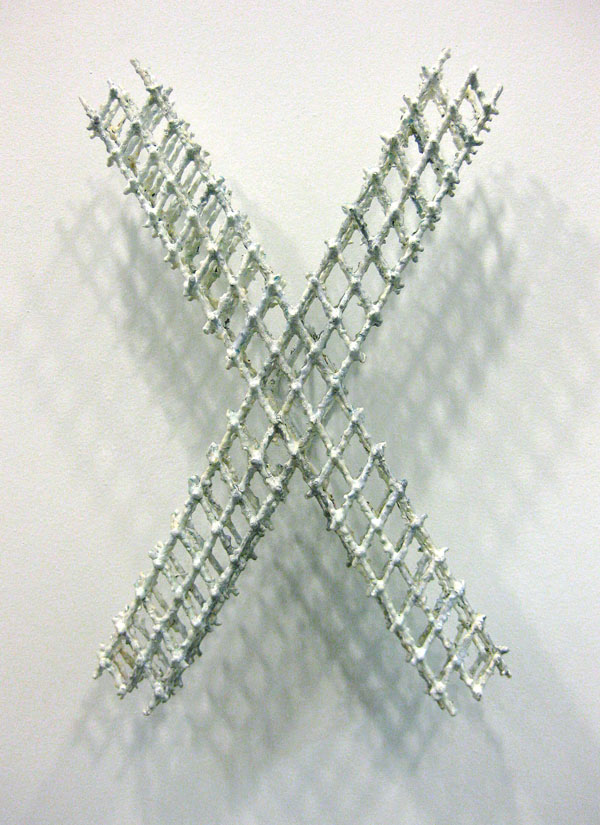

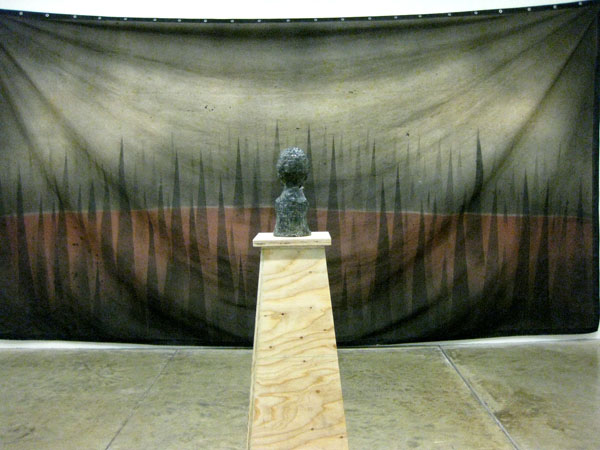


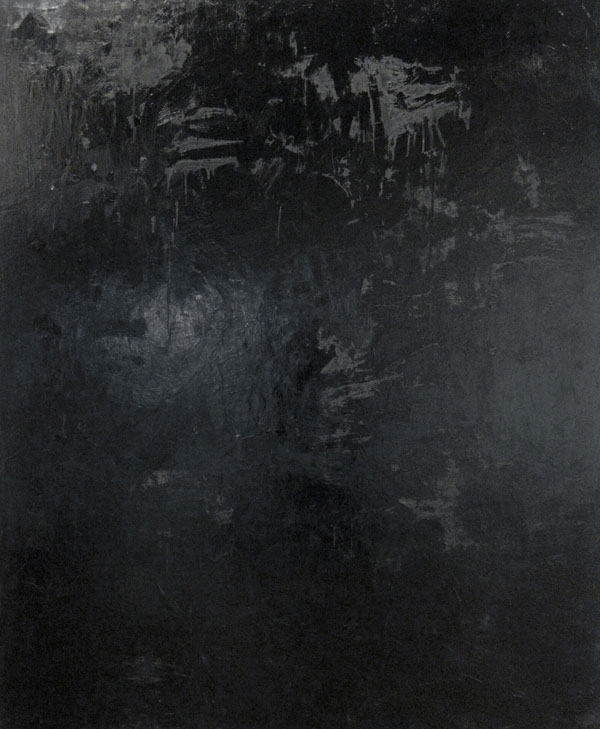
DARK: A SHOW TO WINTER
Sebastian Gogel
Matthew Green
Frank Haines / Francis Heinzfeller
Alex Hubbard
Arnold Kemp
Alicia Love McDaid
Thomas Moecker
Jo Nigoghossian
Sven Stuckenschmidt
Molly Vidor
February 5–March 13, 2010
DARK: A SHOW TO WINTER was curated for Fourteen30 Contemporary by The Blood Rainbow Family. Blood Rainbow Family (BRF) is a close-knit collaborative group of artists who work primarily in video, installation, and performance. BRF presented 2006’s HAUNTED exhibition, in Portland, Oregon: a precursor to DARK. In a 1998 interview Alan Vega of electronic duo Suicide described the live experience of the band as “you are coming off the street to come into the street.”
The exhibition DARK: A SHOW TO WINTER will function under the same premise. Opening during the dead of a Portland winter, DARK will include work that addresses and/or reflects this outside environment. The grim, the cold and the black will mingle with the solitary, the contemplative and the transcendent. Explorations of dark and winter drawn from both a common visual culture, as well as more personal voids, will work together to bring the vast, seemingly endless dark winter into the confines of the gallery space. - The Blood Rainbow Family DARK: A SHOW TO WINTER continues the gallery’s yearlong collaboration with writer John Motley.
As part of a continued commitment to fostering vital discourse surrounding contemporary art, Fourteen30 Contemporary has commissioned Motley to produce a critical essay for each gallery exhibition through the summer of 2010. Each essay will appear as part of a limited quantity of offset printed posters, available at the gallery or by request. In an excerpt from his essay on DARK, Motley writes:
“The semantic history of "darkness" is characterized by a braiding of literal and figurative meanings. In its most literal sense, darkness is simply the absence of light. Tracing the word back to its earliest form reveals a far less concrete meaning: to conceal, to hide. Darkness, then, is not merely the condition of night or the ostensible blindness it imposes, but a state of protracted separation, an immersion in the unknown. Over centuries, these significations have merged. Now, the notion of physical darkness is always limned with a metaphorical depth, tangled up with broader connotations, such as spiritual crisis, confusion, disorientation, ignorance, and savagery. Even the words we use to describe the movement of darkness corroborate its cultural status as a pejorative figure, subjugated by its binary master, "light": night falls, darkness descends. And yet darkness is not solely the conclusion of an inevitable downward slide. It is also an originary state. In the Judeo-Christian origin myth, darkness precedes all existence, as an entity that is as unfathomably formless and omnipresent as God himself. Thus the decree "Let there be light" upends our understanding of darkness, suggesting an inversion of the wellestablished binary: light is the absence of darkness. This linguistic slipperiness enacts the word's diffuse meanings, consolidating knotty contradictions in a midnight state of signification. Darkness is unknown; it is hidden.”
Sebastian Gogel
Matthew Green
Frank Haines / Francis Heinzfeller
Alex Hubbard
Arnold Kemp
Alicia Love McDaid
Thomas Moecker
Jo Nigoghossian
Sven Stuckenschmidt
Molly Vidor
February 5–March 13, 2010
DARK: A SHOW TO WINTER was curated for Fourteen30 Contemporary by The Blood Rainbow Family. Blood Rainbow Family (BRF) is a close-knit collaborative group of artists who work primarily in video, installation, and performance. BRF presented 2006’s HAUNTED exhibition, in Portland, Oregon: a precursor to DARK. In a 1998 interview Alan Vega of electronic duo Suicide described the live experience of the band as “you are coming off the street to come into the street.”
The exhibition DARK: A SHOW TO WINTER will function under the same premise. Opening during the dead of a Portland winter, DARK will include work that addresses and/or reflects this outside environment. The grim, the cold and the black will mingle with the solitary, the contemplative and the transcendent. Explorations of dark and winter drawn from both a common visual culture, as well as more personal voids, will work together to bring the vast, seemingly endless dark winter into the confines of the gallery space. - The Blood Rainbow Family DARK: A SHOW TO WINTER continues the gallery’s yearlong collaboration with writer John Motley.
As part of a continued commitment to fostering vital discourse surrounding contemporary art, Fourteen30 Contemporary has commissioned Motley to produce a critical essay for each gallery exhibition through the summer of 2010. Each essay will appear as part of a limited quantity of offset printed posters, available at the gallery or by request. In an excerpt from his essay on DARK, Motley writes:
“The semantic history of "darkness" is characterized by a braiding of literal and figurative meanings. In its most literal sense, darkness is simply the absence of light. Tracing the word back to its earliest form reveals a far less concrete meaning: to conceal, to hide. Darkness, then, is not merely the condition of night or the ostensible blindness it imposes, but a state of protracted separation, an immersion in the unknown. Over centuries, these significations have merged. Now, the notion of physical darkness is always limned with a metaphorical depth, tangled up with broader connotations, such as spiritual crisis, confusion, disorientation, ignorance, and savagery. Even the words we use to describe the movement of darkness corroborate its cultural status as a pejorative figure, subjugated by its binary master, "light": night falls, darkness descends. And yet darkness is not solely the conclusion of an inevitable downward slide. It is also an originary state. In the Judeo-Christian origin myth, darkness precedes all existence, as an entity that is as unfathomably formless and omnipresent as God himself. Thus the decree "Let there be light" upends our understanding of darkness, suggesting an inversion of the wellestablished binary: light is the absence of darkness. This linguistic slipperiness enacts the word's diffuse meanings, consolidating knotty contradictions in a midnight state of signification. Darkness is unknown; it is hidden.”